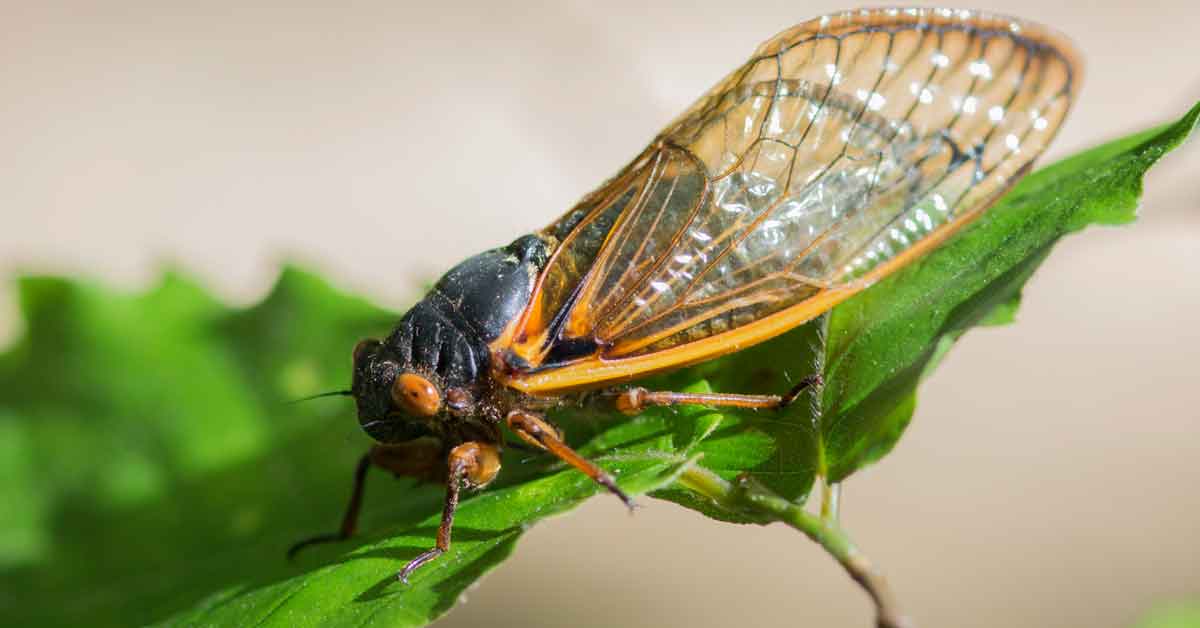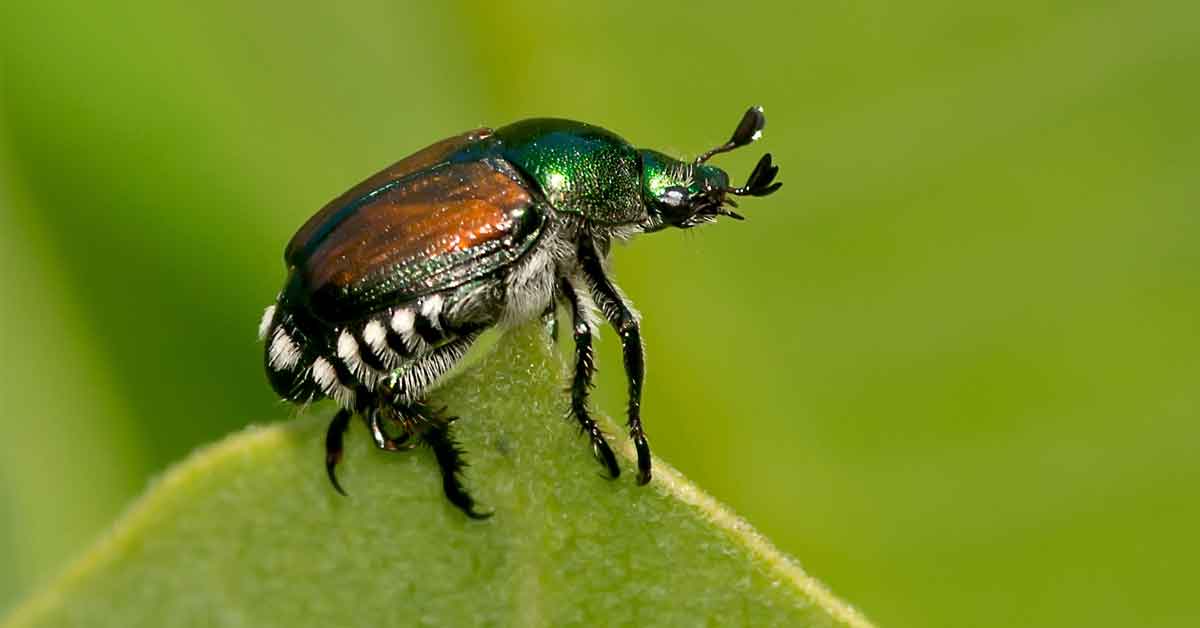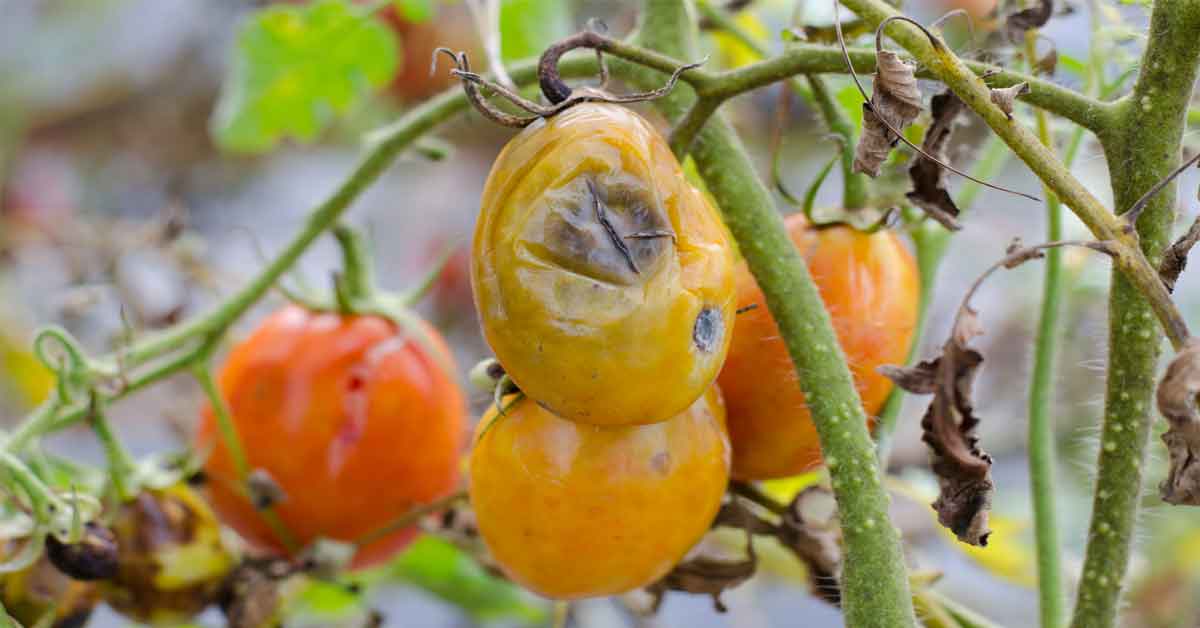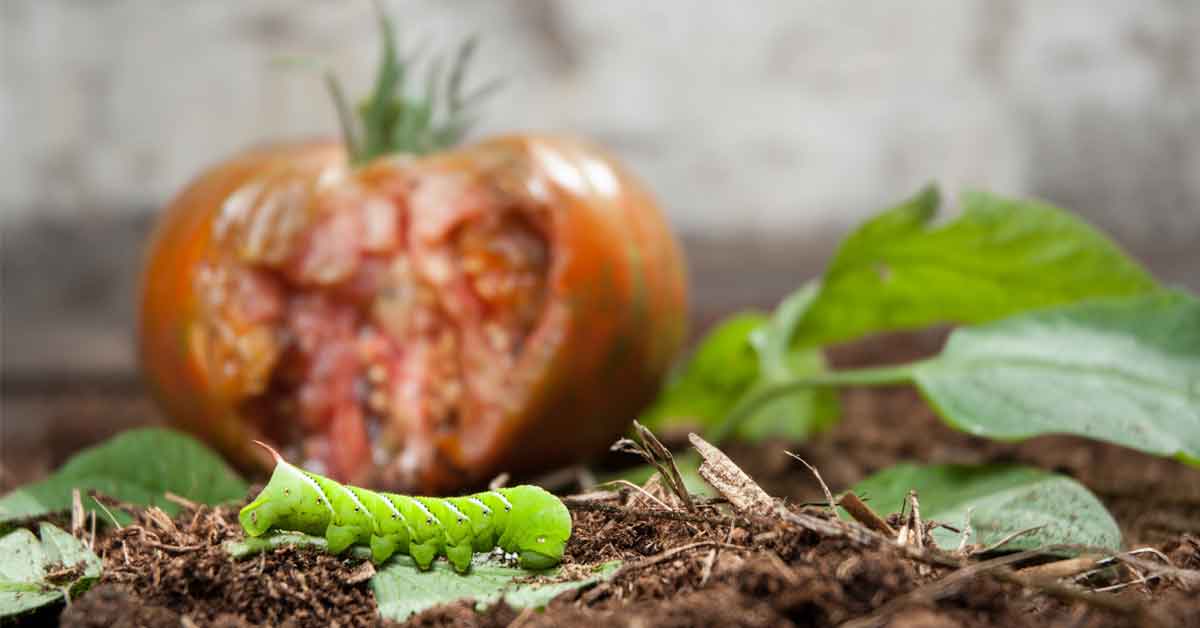How to Identify and Control Common Plant Pests
When you're in the garden picking homegrown produce and find telltale bite marks on your plants, chances are you have insect pests. Knowing what you're dealing with when it comes to insects allows you to choose the best pesticide for getting rid of those uninvited dinner guests. These 20 common garden troublemakers target edible crops, ornamentals or both:
- Aphids
- Bagworms
- Cabbageworms
- Cicadas
- Colorado Potato Beetles
- Corn Earworms
- Cucumber Beetles
- Flea Beetles
- Japanese Beetles
- Lace Bugs
- Leafhoppers
- Mexican Bean Beetles
- Scale
- Slugs and Snails
- Spittlebugs
- Squash Bugs
- Stink Bugs
- Tent Caterpillars
- Thrips
- Tomato Hornworms
Aphids
Several species of this sap-sucking, winged pest exist. You'll find aphids in green, black, yellow or red. They attack edible and ornamental plants, including garden roses, causing stunted growth, curling and yellowing leaves, and a honeydew buildup that leads to black, sooty mold. Honeydew produced by aphids attracts ants as well, so include them in your treatment plan. Read more about controlling aphids.
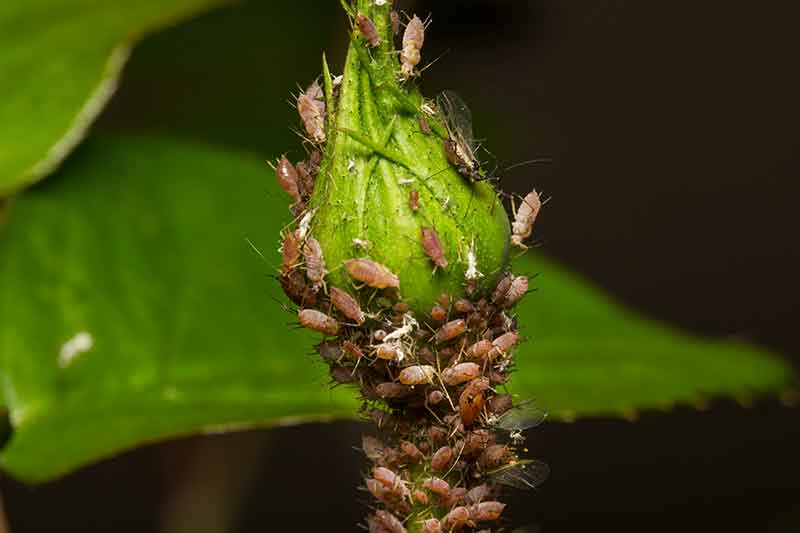
Bagworms
Recognized for the protective bags they produce that hang down from various species of trees, bagworms can defoliate trees if an infestation is heavy. Effective treatment catches these pests in the larval stage, before their protective bags develop and pesticides can't reach them inside. Read more about controlling bagworms.
Cabbage Worms
Green, hairy cabbageworms have a velvety appearance and a row of light spots along their backs. These voracious feeders eat vegetable plant leaves, creating large, irregular holes, often along the midrib. When feeding on cabbage, these worms bore directly into the head. Their excrement consists of greenish-brown pellets. After two to three weeks of feeding, the wormlike larvae pupate and attach themselves to stems by a silk thread. The adult form, the imported cabbageworm butterfly, is easy to spot. It's white, with one to four black spots on its wings. Read more about controlling cabbage worms.

Cicadas
Loud pests that buzz, cicadas are often mistakenly called locusts. After they emerge from the ground and climb trees to molt, their outer skins remain hanging from tree branches or drop to the ground. Signs of infestation include splits in twigs where the insects have laid eggs. Read more about controlling cicadas.
Colorado Potato Beetles
Distinctive 1/2-inch-long yellow insects, Colorado potato beetles feature black, brown and yellow stripes on their wing covers. They gobble up and skeletonize the foliage on plants in the nightshade family, including potatoes, eggplant, peppers and tomatoes. Female beetles lay clusters of bright yellow-orange eggs on the undersides of the leaves. Hump-backed larvae hatch from these eggs and molt several times during feeding, growing fatter each time. Read more about controlling Colorado potato beetles.
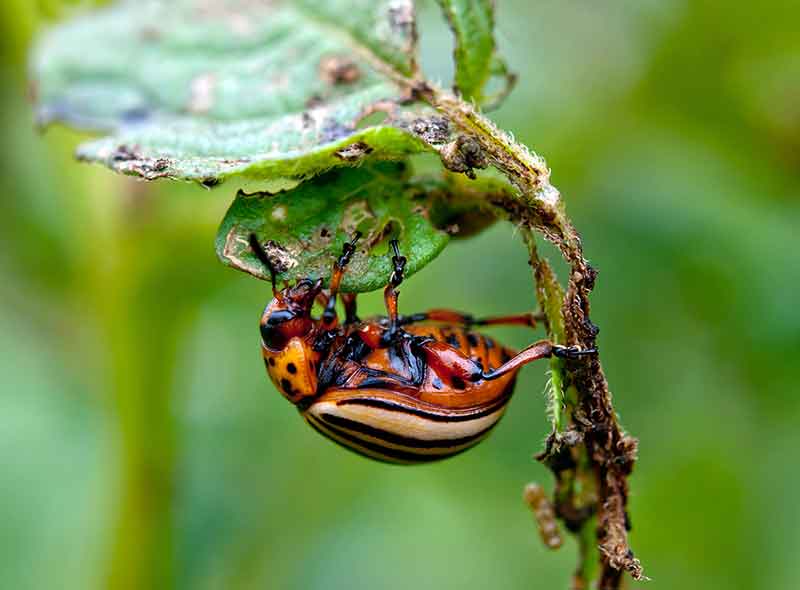
Corn Earworms
Ravenous worms with a propensity to feed on the tip area of corn, corn earworms also attack tomatoes, fruits and bean pods. They leave extensive brown excrement around their feeding areas. Mature worms are 1 1/2 inches long with many thorny microspines. They vary in color from brown or pale green to light pink. The yellow adult moths lay small, white eggs on foliage and in the corn silk. Read more about controlling corn earworms.
Cucumber Beetles
Eye-catching adult cucumber beetles are yellow with black stripes or spots. The larvae are white and thin. As adults, these pests damage plants by feeding on leaves, soft fruits, shoots and blossoms. As larvae, they feed on roots, leaving plants susceptible to wind damage. Common targets of these beetles are cucumber, cantaloupe, watermelon, pumpkin, winter and summer squash, and gourds. Read more about controlling cucumber beetles.
Flea Beetles
Named appropriately, flea beetles are tiny green or black beetles that jump like common fleas. They attack a wide range of plants, including fruits, vegetables and ornamentals. Adult flea beetles create pinholes in leaves. Read more about controlling flea beetles.
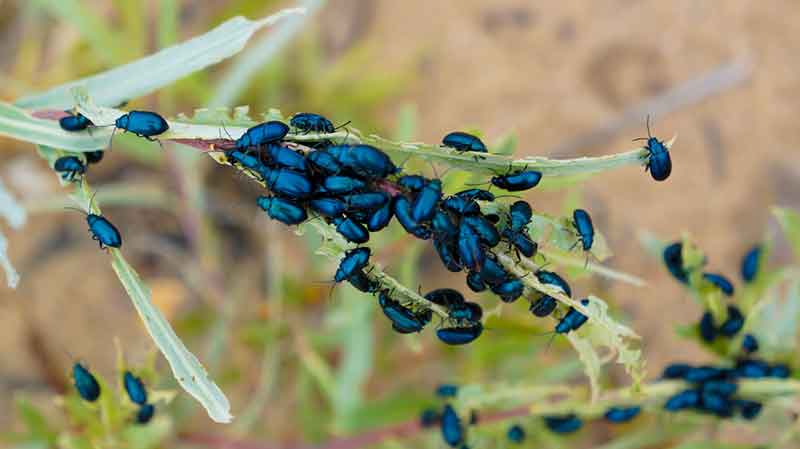
Japanese Beetles
Notorious for skeletonizing leaves of a wide variety of edible and ornamental plants, Japanese beetles have iridescent copper wings and a metallic-green thorax and head. Underneath they have small tufts of white hairs along the sides of their abdomens. The slightly curved, lawn-damaging larvae, also known as grubs, are gray-white with brown heads. Read more about controlling Japanese beetles.
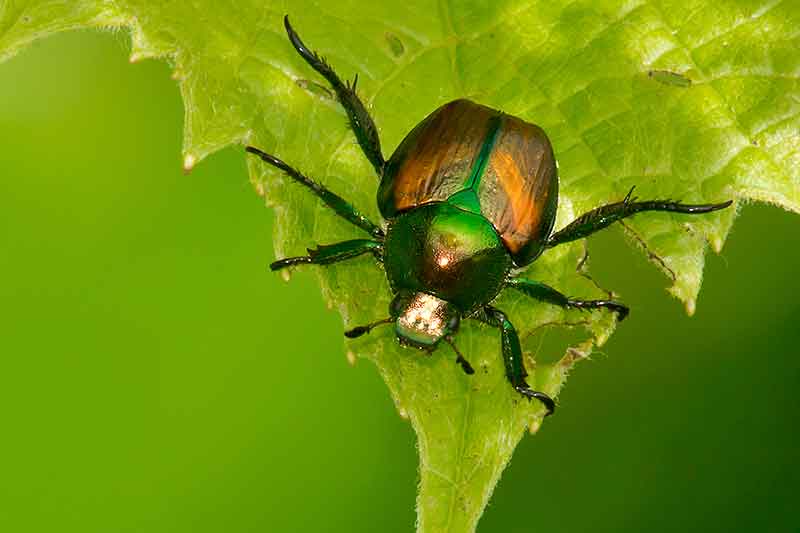
Lace Bugs
These gray pests are so called because they have lacelike wing covers. Lace bugs suck the sap from the undersides of fruit and ornamental tree leaves, leaving the upper sides mottled with tiny, light-gray spots. When feeding, they leave behind dark brown honeydew excrement. Read more about controlling lace bugs.
Leafhoppers
Flying or jumping when disturbed, these small, thin, wedge-shaped insects come in shades of green, brown and yellow, depending on the species. Leafhoppers feed on a variety of edible and ornamental plants and cause leaves to lose color, turn brown and become stippled. They also leave behind black excrement. Read more about controlling leafhoppers.
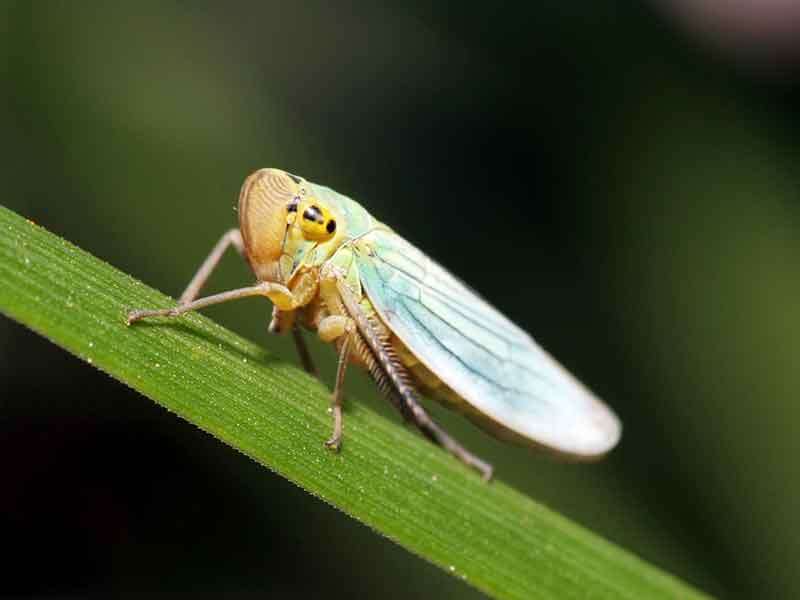
Mexican Bean Beetles
Copper in color, Mexican bean beetles have eight black spots on each wing cover. They skeletonize the leaves of beans (their preferred hosts), as well as black-eyed peas, soybeans, cowpeas, mung beans, alfalfa and clover. The larvae are light yellow with a spiny appearance; the eggs are also yellow and found in clusters on leaves. Read more about controlling Mexican bean beetles.
Scale
Circular insects, scales are found on the stems of plants and the underside of leaves, and they often look like a part of the plant. The protective scale-like covering of these insects may be hard and armor-like or soft and cottony. Scales suck plant sap, creating honeydew and attracting ants, which protect the scales from predators and require treatment as well. Read more about controlling scale.
Slugs and Snails
Using two tentacles for sight and smell, these garden pests slide along on a muscular foot and create mucin trails as they go. The only visible difference between these two mollusks is the hard, external shell that snails have for protection. Voracious eaters, these common pests like to eat young, tender plants. Lettuce, basil, strawberries and tomatoes are among their favorite snacks. Read more about slugs and snails and how to prevent them from damaging your plants.Spittlebugs
It's easy to spot the damage created by spittlebugs. Brownish-gray insects able to hop and fly, they produce a telltale foamy substance that looks like spit. It covers leaves and congregates in the forks of stems. Spittlebugs like to attack herbs, pecans and strawberries. Read more about controlling spittlebugs.
Squash Bugs
Somewhat flat in shape, squash bugs are dark brown or black and congregate at the base of plants or under dead foliage. They have piercing mouthparts that suck plant sap, causing yellow spots on leaves that will often later wilt, blacken, die and fall off. The eggs are long and yellow in color. Read more about controlling squash bugs.
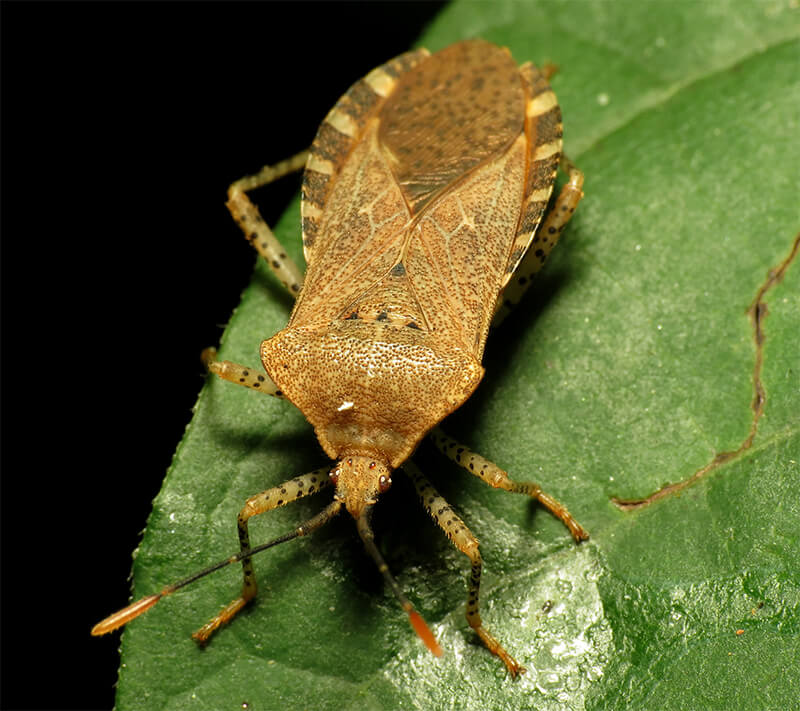
Stink Bugs
Shaped like a shield, sap-sucking stink bugs are brown, green or mottled. They feed on a wide variety of edible plants, including various fruit trees and some ornamentals. Fruits become puckered, scarred and distorted as a result of the feeding. The eggs are light red to yellow-red and are found on the undersides of leaves. Read more about controlling stink bugs.
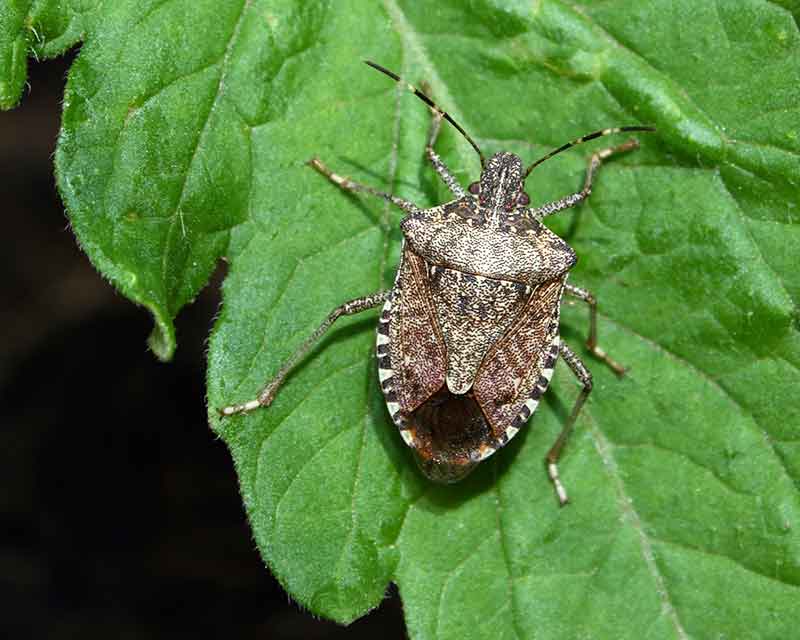
Tent Caterpillars
Attacking various trees and shrubs, tent caterpillars defoliate and stunt plant growth. The adults are hairy and dark brown with a yellow-spotted stripe along the spine. The insect creates silky, tent-like coverings that protect egg masses encircling twigs during the winter months. Read more about controlling tent caterpillars.
Thrips
These small, slender insects are brown, black or yellow and have fringed wings. Thrips damage fruit trees and ornamental plants. They suck on plants, which results in silvering and mottling of the surface of the leaves. They also leave behind black, shiny flecks of excrement. Read more about controlling thrips.
Tomato Hornworms
Known for quickly devouring the foliage of vegetable crops such as tomatoes, peppers, potatoes and eggplant, tomato hornworms measure up to 4 inches long and feature posterior horns. The adults are large moths that appear at dusk. Hornworms in the garden leave large amount of black excrement on the ground near plants. Read more about controlling tomato hornworms.
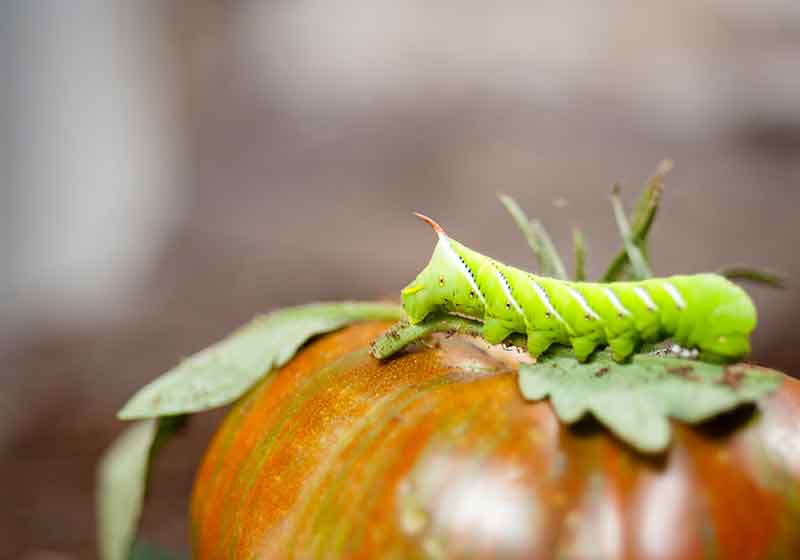
When pests hit your garden, you need treatment you can trust. Sevin Insect Killer Ready to Spray and Sevin Insect Killer Concentrate kill more than 500 insect pests by contact. Then they keep on protecting fruit and vegetable gardens, ornamental and flower gardens, lawns and around your home for up to three months.+ Sevin Insect Killer Ready To Use2 kills more than 700 listed garden pests on contact, without harming plants or blooms. Always check your product label for both the plant and the pest involved. You can even treat many favorite garden edibles, including tomatoes and peppers, right up to one full day before harvest.
With GardenTech and Sevin brand, you can say goodbye to insect troubles and enjoy all of your garden's goodness and nutrition without sharing with insect pests. Gardeners have trusted Sevin garden insecticides for more than 50 years, and you and your family can do the same.
+Except fire ants, fleas, ticks and mosquitoes
Always read product labels thoroughly and follow instructions, including guidelines for listed plants and pests, application frequency and pre-harvest intervals (PHI) for edible crops.
GardenTech is a registered trademark of Gulfstream Home & Garden, Inc.
Sevin is a registered trademark of Tessenderlo Kerley, Inc.
Get Monthly Gardening Advice!

